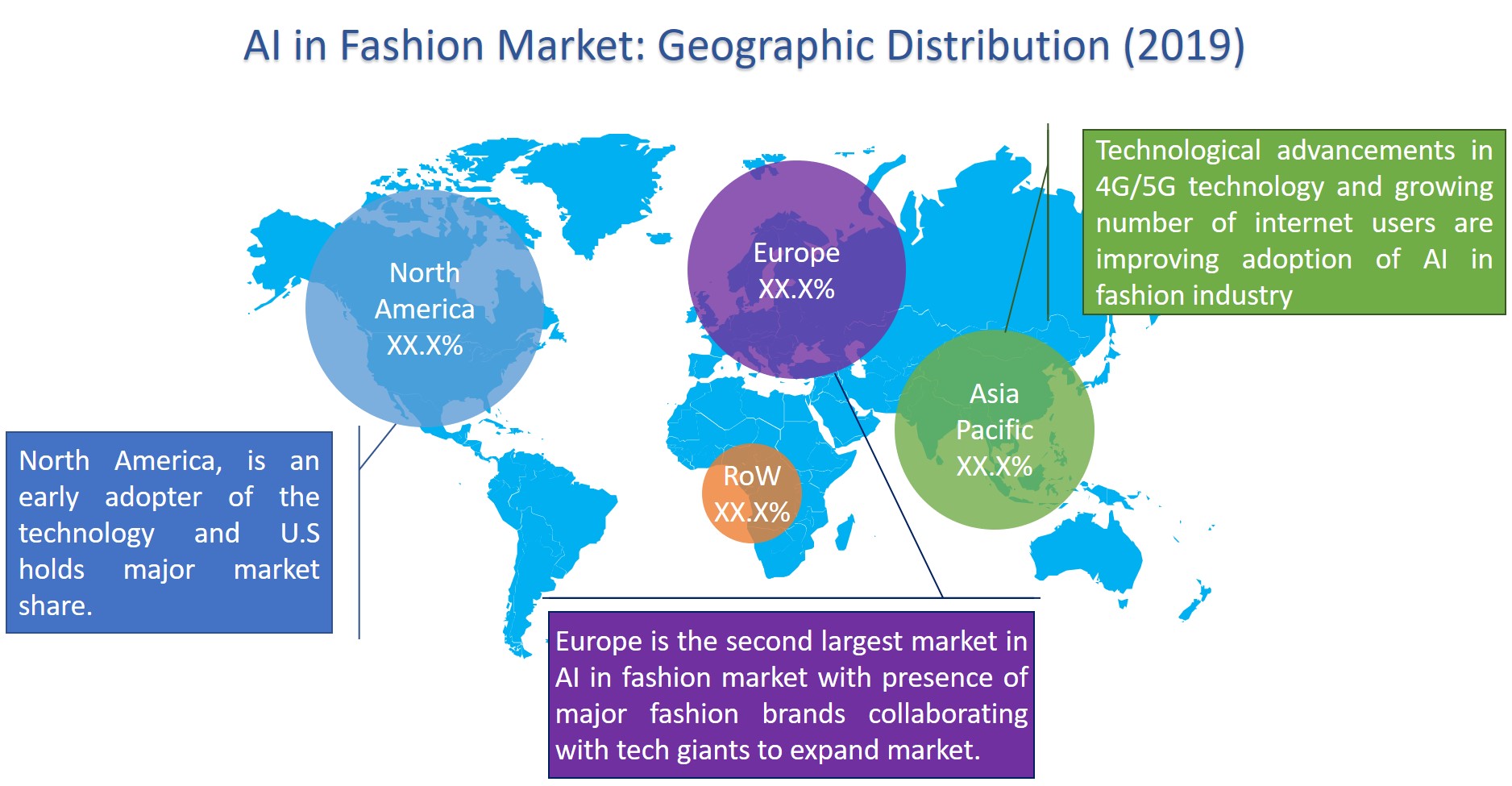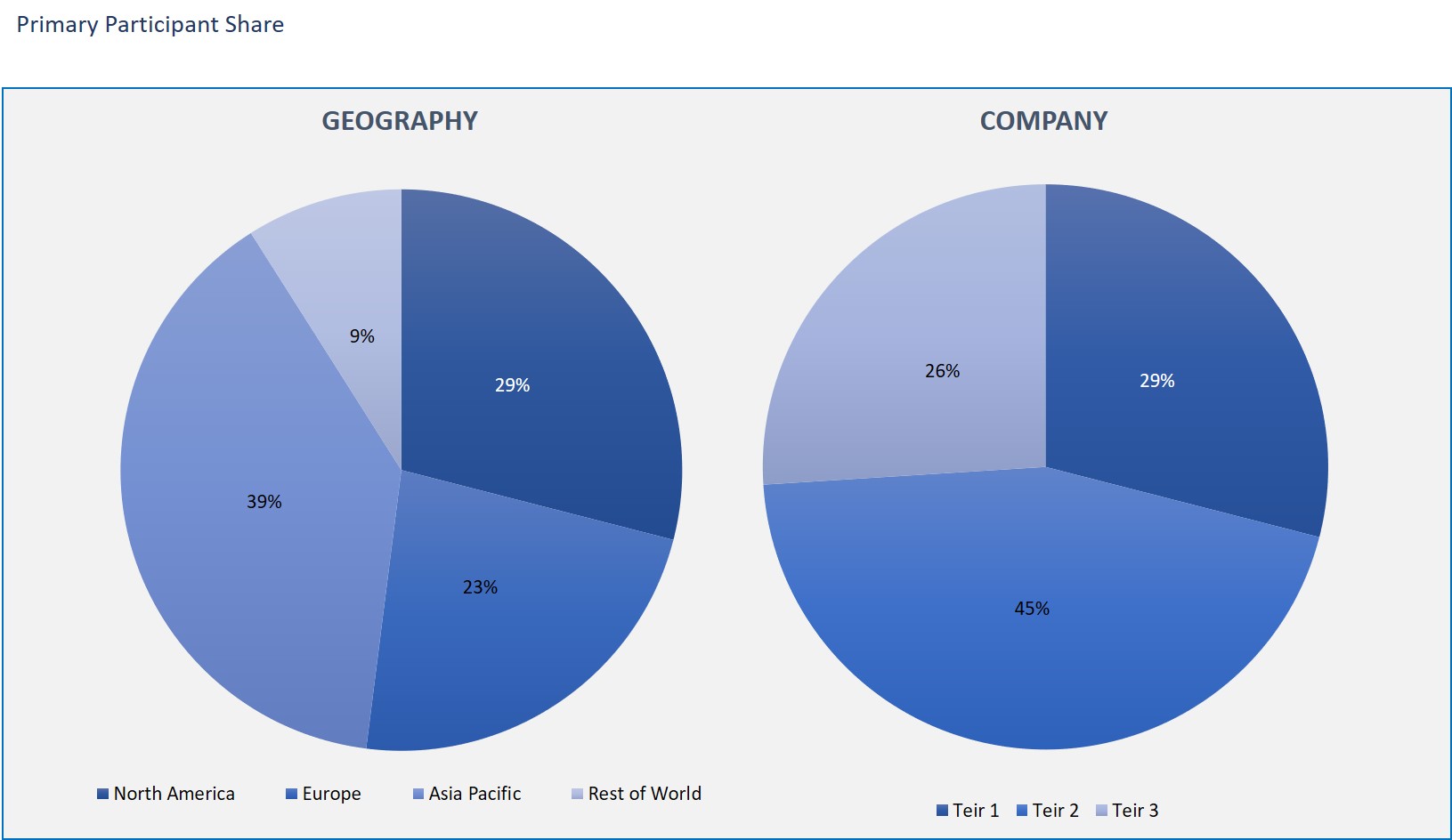
AI in Fashion by Component (Solutions and Services), by Application (Product Recommendation, Product Search & Discovery, Virtual Assistants, Others, and Customer Relationship Management), by Deployment Mode (Cloud, and On-premises), by Category, (Apparel, Accessories, Footwear, Jewelry & Watches, Beauty & Cosmetics, and Others), by End-User (Fashion Designers, and Fashion Stores), and Region (North America, Asia, Europe, and Rest of World) – Global Forecast up to 2026
- July, 2020
- Domain: ICT - digital technologies
- Get Free 10% Customization in this Report
Time to restyle the fashion industry which has been the epitome of styling for years. It is the situation of the pandemic which causes such changes inevitable. The ongoing pandemic has forced the fashion industry to vamp up the technologies which can make people safer as well as give the customer’s an enriching experience. Fashion Industry is seen as one of the most competitive markets where something which is trending today may find itself in the corner the next day. In the backdrop of the pandemic, the artificial intelligence (AI) can be used as of the smartest tool to help the interests of the customers. Right now, it has been used to increase the productivity of the manufacturing of the clothes and the smooth functioning of enterprises.

A need for personalization of products has made AI the top choice of every industry. We have already witnessed the “suggestions based on what you have seen” on various OTT platforms like Netflix, Amazon, and a plethora of others. The current environment values personal experience as the highest. Time to see some disruptive ideas emerging in the fashion industry as well.AI has umpteen applications in the fashion industry, ranging from product recommendation, product search, creative designing, and trend forecasting, virtual assistant, supply chain management, and demand forecasting and other applications.
There has been a huge demand for AI in the fashion industry and this is major because of the rising influence of social media on the industry of fashionistas. The growing popularity of personalized experience is the driving force behind the demand for AI. Apart from this, giving suggestions to the customer concerning upcoming future trends tracking their past shopping behavior and the growth in the retail industry are the other two key factors that are boosting the adoption of AI in the fashion hub. India, being a diverse country that has huge diverse behavior in terms of culture and region, such differentiation can be a huge challenge to cope up with it. The extra clutter on social media is also something that needs to be broken down to capture enough eye-balls of the customers.
There is no speck of doubt that Artificial Intelligence AI has changed the way business is done. With the growing popularity of e-commerce, more and more consumer data is being tracked than ever. Most of the trending fashion platforms are able to decode consumer data based on their shopping behavior.
Research Methodology:
The market of AI in fashion has been analyzed by utilizing the optimum combination of secondary sources and in-house methodology, along with an irreplaceable blend of primary insights. The real-time assessment of the market is an integral part of our market sizing and forecasting methodology. Our industry experts and panel of primary participants have helped in compiling relevant aspects with realistic parametric estimations for a comprehensive study. The participation share of different categories of primary participants is given below:

On the basis of components, Artificial Intelligence in the fashion market is fragmented into 2 parts:
- Solutions
- Services
Due to a higher adoption rate, the solution segment outperforms the services segment and is expected to record higher growth in the future. Fashion retailers are moving more and more towards advanced technologies that can streamline their business processes and help attract new customers.
The deployment segment is further categorized into 2 segments into the
- Cloud
- On-premises
Owing to the fact that a lot of improvements have happened in integration and scalability coupled with ease of deployment, the cloud-based model is anticipated to be the driving force behind the adoption of cloud-based AI solutions in the fashion market. The issues pertaining to data privacy and security happen to increase the demand for on-premise AI solutions in the fashion industry.
On the basis of applications, AI in the fashion hub can be categorized under
- Customer Relationship Management
- Virtual Assistants
- Product Recommendation
- Product Search and Discovery
- Supply Chain Management and Demand Forecasting
- Creative Designing and Trend Forecasting
Based on end-users, the AI in Fashion is categorized into:
- Fashion Designers
- Fashion Stores
Various factors such as increasing need to reduce the time required to develop and visualize thousands of images to forecast fashion trends, and need to quickly analyze various fashion clothing patterns are the boomers behind the significant usage of AI in the fashion industry. The fashion store category is expected to be the major contributor in terms of the adoption of AI technologies.
On the basis of Category, the market is divided into:
- Apparel
- Accessories
- Footwear
- Beauty and Cosmetics
- Jewelry And Watches
- Others
The adoption of AI and ML technologies in fashion and luxury brands is increasing as enterprises wish to cater to various requirements of the clients and industry. The various fashion brand has started adopting AI to offer recommendations for clothing to help customer to get an accurate outfit and thus reduces purchase return rates and increase profit margins. The apparel category is expected to be the major contributor in terms of the adoption of AI and ML technologies.
Based on the Geographic region, it covers:
- North America
- Europe
- Asia Pacific
- Rest of the World
North America holds the largest share of the AI in the fashion market, while Asia Pacific is expected to grow at the highest CAGR during the forecasting period. The growth of Asia Pacific is attributed to growing technological advancements in countries such as China, India, and Japan. China has presented numerous research papers on the use of AI across verticals.
However, there is much scope of improvement globally owing to the fact that the initial investment in this market is high and its maintenance cost is also high to sustain it. However, we see that the market is growing with key providers operating in the global AI in fashion include Adobe, Oracle, Catchoom, Huawei, Vue.AI, Heuritech, Wide Eyes, Findmine, Intelistyle, Lily AI, IBM, Microsoft, Google, Facebook, AWS, Pttrns.AI, SAP, Stitch Fix, Syte, and Mode AI.
The AI in the Fashion Industry is expected to grow at a CAGR of ~39.17% during the forecast period 2020–2026. This report grants exhaustive research about the ongoing trends and the competitive trends following the usage of AI in the fashion industry.
- The report would be providing the key-insights about the current level of AI in the fashion industry
- A qualitative analysis would be the backbone for any in-depth research for the usage of AI in the fashion segment
- The technological challenges and the data privacy issues would be handled in the exhaustive report as well
*The report will be delivered within 4-5 working days
- Executive Summary
- Industry Outlook
- Industry Overview
- Industry Trends
- Market Snapshot
- Market Definition
- Market Outlook
- PEST Analysis
- Porter Five Forces
- Related Markets
- Ecosystem
- Market Outlook
- Market Evolution
- Market Trends and Impact
- Market Segmentation
- Market Dynamics
- Drivers
- Restraints
- Opportunities
- DRO - Impact Analysis
- Components: Market Size & Analysis
- Overview
- Solution
- Services
- Application: Market Size & Analysis
- Overview
- Customer Relationship Management
- Virtual Assistants
- Product Recommendation
- Product Search and Discovery
- Supply Chain Management and Demand Forecasting
- Creative Designing and Trend Forecasting
- Deployment Mode: Market Size & Analysis
- Overview
- Cloud
- On-premises
- Category: Market Size & Analysis
- Overview
- Apparel
- Accessories
- Footwear
- Beauty and Cosmetics
- Jewellery and Watches
- Others
- End User: Market Size & Analysis
- Overview
- Fashion Designers
- Fashion Stores
- Geography: Market Size & Analysis
- Overview
- North America
- Europe
- Asia Pacific
- Rest of the World
- Competitive Landscape
- Competitor Comparison Analysis
- Market Developments
- Mergers and Acquisitions, Legal, Awards, Partnerships
- Product Launches and execution
- Vendor Profiles
- Adobe
- Overview
- Product Offerings
- Geographic Revenue
- Business Units
- Developments
- SWOT Analysis
- Business Strategy
- Oracle
- Overview
- Product Offerings
- Geographic Revenue
- Business Units
- Developments
- SWOT Analysis
- Business Strategy
- Catchoom
- Overview
- Product Offerings
- Geographic Revenue
- Business Units
- Developments
- SWOT Analysis
- Business Strategy
- Huawei
- Overview
- Product Offerings
- Geographic Revenue
- Business Units
- Developments
- SWOT Analysis
- Business Strategy
- Vue.AI
- Overview
- Product Offerings
- Geographic Revenue
- Business Units
- Developments
- SWOT Analysis
- Business Strategy
- Heuritech
- Overview
- Product Offerings
- Geographic Revenue
- Business Units
- Developments
- SWOT Analysis
- Business Strategy
- Wide Eyes
- Overview
- Product Offerings
- Geographic Revenue
- Business Units
- Developments
- SWOT Analysis
- Business Strategy
- Findmine
- Overview
- Product Offerings
- Geographic Revenue
- Business Units
- Developments
- SWOT Analysis
- Business Strategy
- Intelistyle
- Overview
- Product Offerings
- Geographic Revenue
- Business Units
- Developments
- SWOT Analysis
- Business Strategy
- Lily AI
- Overview
- Product Offerings
- Geographic Revenue
- Business Units
- Developments
- SWOT Analysis
- Business Strategy
- Adobe
- Companies to Watch
- IBM
- Overview
- Market
- Business Strategy
- Microsoft
- Overview
- Market
- Business Strategy
- Google
- Overview
- Market
- Business Strategy
- Facebook
- Overview
- Market
- Business Strategy
- AWS
- Overview
- Market
- Business Strategy
- Pttrns.AI
- Overview
- Market
- Business Strategy
- SAP
- Overview
- Market
- Business Strategy
- Stitch Fix
- Overview
- Market
- Business Strategy
- Syte
- Overview
- Market
- Business Strategy
- Mode AI
- Overview
- Market
- Business Strategy
- IBM
- Analyst Opinion
- Annexure
- Report Scope
- Market Definitions
- Research Methodology
- Data Collation and In-house Estimation
- Market Triangulation
- Forecasting
- Report Assumptions
- Declarations
- Stakeholders
- Abbreviations
Research Framework
Infoholic research works on a holistic 360° approach in order to deliver high quality, validated and reliable information in our market reports. The Market estimation and forecasting involves following steps:
- Data Collation (Primary & Secondary)
- In-house Estimation (Based on proprietary data bases and Models)
- Market Triangulation
- Forecasting

Market related information is congregated from both primary and secondary sources.
Primary sources
involved participants from all global stakeholders such as Solution providers, service providers, Industry associations, thought leaders etc. across levels such as CXOs, VPs and managers. Plus, our in-house industry experts having decades of industry experience contribute their consulting and advisory services.
Secondary sources
include public sources such as regulatory frameworks, government IT spending, government demographic indicators, industry association statistics, and company publications along with paid sources such as Factiva, OneSource, Bloomberg among others.
